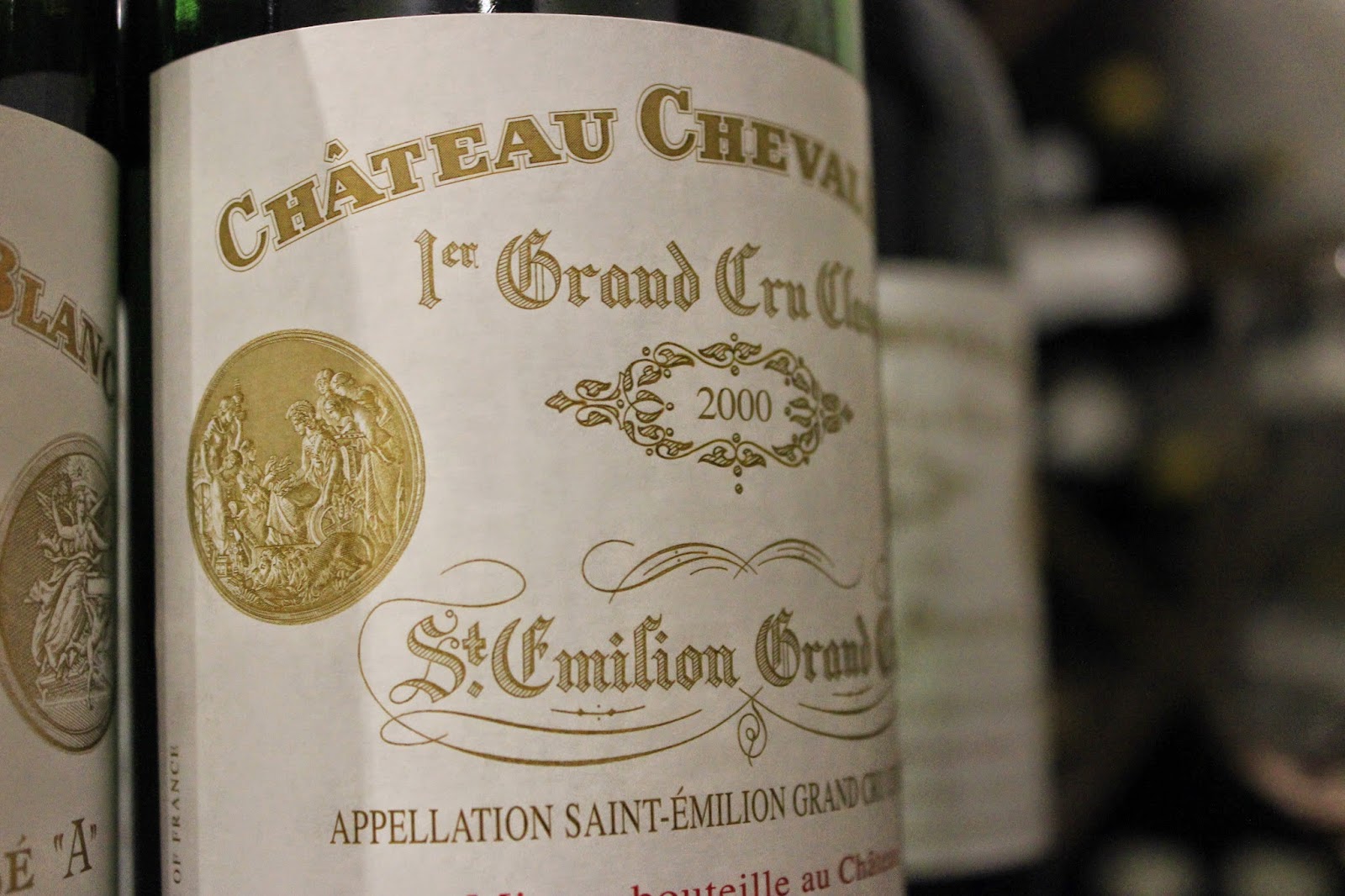Yesterday we were treated to a Cheval Blanc master-class with Pierre-Olivier Clouet and Arnaud de Laforcade. This young and talented Technical Director and Finance Director team gave us a wonderful tasting and shared their wine-making philosophy in our chilly St James’s Street Cellar.
 We started with a flight of Quinault L’Enclos, the newest addition to the group. This small vineyard in the outskirts of Libourne was purchased in 2009 and has undergone a complete transformation in the vineyard and the winery. The gravelly vineyards have been ploughed and organic farming techniques have been adopted. In the chai, Pierre-Olivier is using a much lighter touch, allowing the vintage and the terroir to speak. The progress is evident just from the three vintages we tasted: 2010, 2011 and 2012. The 2012 is wonderfully aromatic, is packed with transparent fruit and is beautifully balanced. Texturally, this is so refined – the tannins are fruity and long with no sense of dryness. This is definitely an estate to add to the watch list.
We started with a flight of Quinault L’Enclos, the newest addition to the group. This small vineyard in the outskirts of Libourne was purchased in 2009 and has undergone a complete transformation in the vineyard and the winery. The gravelly vineyards have been ploughed and organic farming techniques have been adopted. In the chai, Pierre-Olivier is using a much lighter touch, allowing the vintage and the terroir to speak. The progress is evident just from the three vintages we tasted: 2010, 2011 and 2012. The 2012 is wonderfully aromatic, is packed with transparent fruit and is beautifully balanced. Texturally, this is so refined – the tannins are fruity and long with no sense of dryness. This is definitely an estate to add to the watch list.
Pierre-Olivier then introduced the wines from Cheval Blanc. The first flight paired the 2010 Petit Cheval and the 2009 Grand Vin. It was extraordinary to re-taste these magnificent wines. At 14.5% alcohol, the 2010 Petit Cheval is a most impressive wine. It possesses all the hallmarks of this arresting vintage: power, alcohol, and the most intoxicating of bouquets, but everything is in perfect balance – this is so harmonious you want to drink it right now! Cheval 2009 is clearly a baby. It has the exoticism of the vintage with copious amounts of extract and regal, large scale tannins. It is a tour de force that requires and will reward patience.
Our next flight was an opportunity to see the progress of the 2011s. You might expect 2011s to struggle after the 2010 and 2009, however, the 2011s equipped themselves admirably. Aromatically they are more reserved. The fruit is dark, brooding and mineral, although there is a nice clarity and precision here. Petit Cheval’s tannins are quite powdery at the moment, a common trait in 2011. The Grand Vin is noble and classy, finishing with pure refined fruit tannins – a noteworthy effort.
The next brace came from the 2006 vintage – something of a forgotten year. Petit Cheval is already quite evolved displaying secondary aromas and gorgeous, mouth-coating iodine and mineral flavours. The Grand Vin is by contrast very primary. The fruit is pure and sexy and the firm tannins require a little more time to blend into the wine. This is a splendid wine which the Cheval team are quite rightly very proud of.

The final flight only had just one wine, the magnificent 2000 Cheval Blanc. This is a wine that really deserves its own flight. It has been a 100 point wine and in our opinion is thoroughly deserving of the accolade. It is unctuous and rich, yet delicate and refined. There is no sense of heaviness; it just keeps giving wonderful perfumed nuanced fruit. This is a deeply complex wine that one can’t help to admire right now, but one senses this could be one of the all-time great Chevals, which will last well into the 21st century.
We’d like to extend our sincere thanks and gratitude to Pierre-Olivier and Arnaud for sharing their passion, time and above all, wonderful wines with us.
Tom Jenkins, Bordeaux Buyer




